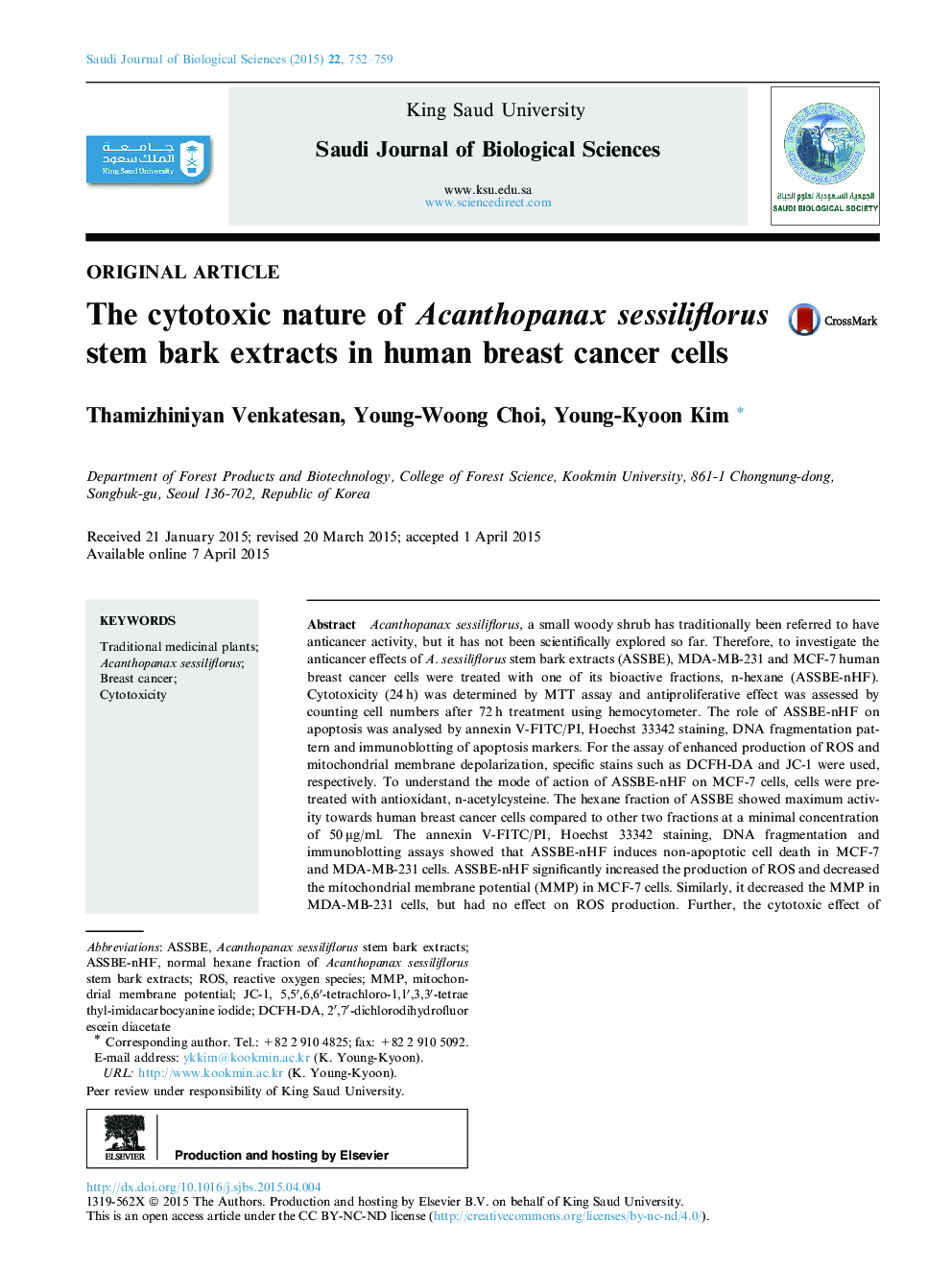| Article ID | Journal | Published Year | Pages | File Type |
|---|---|---|---|---|
| 4406297 | Saudi Journal of Biological Sciences | 2015 | 8 Pages |
Acanthopanax sessiliflorus, a small woody shrub has traditionally been referred to have anticancer activity, but it has not been scientifically explored so far. Therefore, to investigate the anticancer effects of A. sessiliflorus stem bark extracts (ASSBE), MDA-MB-231 and MCF-7 human breast cancer cells were treated with one of its bioactive fractions, n-hexane (ASSBE-nHF). Cytotoxicity (24 h) was determined by MTT assay and antiproliferative effect was assessed by counting cell numbers after 72 h treatment using hemocytometer. The role of ASSBE-nHF on apoptosis was analysed by annexin V-FITC/PI, Hoechst 33342 staining, DNA fragmentation pattern and immunoblotting of apoptosis markers. For the assay of enhanced production of ROS and mitochondrial membrane depolarization, specific stains such as DCFH-DA and JC-1 were used, respectively. To understand the mode of action of ASSBE-nHF on MCF-7 cells, cells were pre-treated with antioxidant, n-acetylcysteine. The hexane fraction of ASSBE showed maximum activity towards human breast cancer cells compared to other two fractions at a minimal concentration of 50 μg/ml. The annexin V-FITC/PI, Hoechst 33342 staining, DNA fragmentation and immunoblotting assays showed that ASSBE-nHF induces non-apoptotic cell death in MCF-7 and MDA-MB-231 cells. ASSBE-nHF significantly increased the production of ROS and decreased the mitochondrial membrane potential (MMP) in MCF-7 cells. Similarly, it decreased the MMP in MDA-MB-231 cells, but had no effect on ROS production. Further, the cytotoxic effect of ASSBE-nHF in MCF-7 cells was not significantly reversed even in the presence of n-acetylcysteine, an antioxidant. These findings revealed that ASSBE-nHF induces non-apoptotic cell death via mitochondria associated with both ROS dependent and independent pathways in human breast cancer cells.
